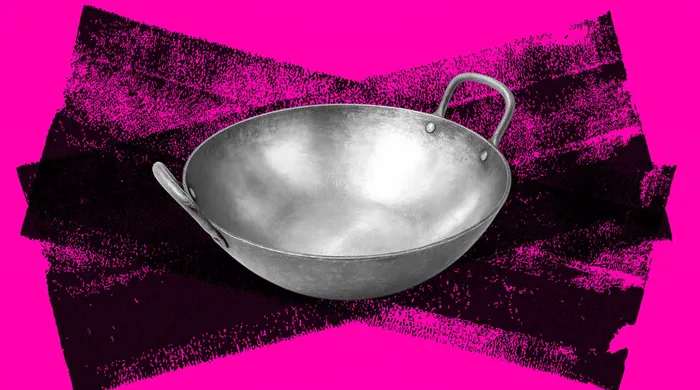
.
Image: Krtola/Adobe Stock, Anastasiia Hevko/Adobe Stock
When the US Food and Drug Administration (FDA) issued an expanded warning in August this year about cookware tainted with lead, the news barely rippled across the Atlantic.
The advisory named several brands, including Tiger White, Silver Horse, and JK Vallabhdas, whose aluminum, brass, and mixed-metal pots were found to leach hazardous amounts of lead and other heavy metals into food when heated.
“Even very low levels of lead exposure can cause serious health effects over time, especially in infants and young children,” the FDA warned.
It advised U.S. consumers to immediately stop using these products, discard them, and avoid donating them to secondhand stores where they could continue circulating.
At first glance, it might seem like an American problem. But health researchers say the same risk exists , and may be even greater in South Africa.
Lead is a potent neurotoxin with no safe level of exposure. While leaded petrol has been phased out and lead in paint has been tightly regulated, less attention has been paid to food-contact materials, even though they are a direct route for lead to enter the body.
A 2023 study published in the South African Journal of Science tested 44 ceramic plates and bowls from chain stores in Johannesburg.
It found that 59% contained lead levels above 90 parts per million (ppm), the safety threshold set by the World Health Organisation and adopted in U.S. and EU regulations.
One of the tested items leached dangerous levels of lead under simulated acidic food conditions.
This suggests that while most ceramic products are relatively safe, the presence of lead in glazes is still widespread,” the authors wrote, warning that chipped or cracked items can accelerate leaching into food.
Even more troubling are findings about artisanal aluminium cookware, commonly known as “informal pots”, which are often produced in small foundries using recycled scrap metal.
A study led by the South African Medical Research Council (SAMRC) and the University of the Witwatersrand found that every single sample tested contained lead, many of them far above European limits for lead release under food-like conditions.
These pots are widely used across townships and rural areas because they are cheap, large, and durable. Some are even used in school feeding programmes.
“People assume that because something is sold in a market or used in schools, it must be safe, but that is not the case,” says environmental health researcher Prof. Angela Mathee of the SAMRC. “We are seeing preventable lead exposure from products used every single day.”
South Africa does have lead regulations, but they are aimed mainly at paint and coatings.
In 2024, the Department of Trade, Industry and Competition announced new regulations tightening the lead limit in paint from 600 ppm to 90 ppm, aligning with international best practice, according to the SafeGuardS (SGS) regulatory briefing.
However, there is no specific regulation that sets limits for lead in cookware or other metal food-contact items. Nor is there a routine government programme to test imported cookware for lead contamination at ports or the retail level.
Lead exposure is a silent epidemic. It does not cause immediate illness, but slowly accumulates in the body, damaging the brain, kidneys, and nervous system.
Children are particularly vulnerable because their bodies absorb lead more easily, and their developing brains are more sensitive to its effects.
Globally, the World Health Organisation estimates that lead exposure contributes to 1.06 million deaths and 24.4 million years of healthy life lost each year.
In South Africa, estimates suggest that more than 50% of children may have blood lead levels above the US reference level of concern (5 micrograms per decilitre), often from multiple sources, such as lead paint, contaminated soil, and increasingly, consumer products. This incredible fact is based on the South African blood lead surveys led by Prof. Angela Mathee and colleagues at the South African Medical Research Council (SAMRC) and the University of the Witwatersrand.
Cooking pots are often overlooked. Yet they are used daily, sometimes multiple times per day, meaning that even low-level leaching can add up to a significant dose over time.
“The tragedy is that this is entirely preventable,” Prof. Mathee told the Daily Maverick in 2023.
“Safe cookware exists, and safer production methods exist. What’s missing is enforcement and consumer awareness,” she said.
While the FDA’s recall does not directly apply to South African retailers, it may still have knock-on effects. Local importers and distributors who source cheap aluminium cookware from Asia, the same supply chains targeted by the FDA, could be pressured to review their stock and testing procedures.
In addition, South African consumer watchdogs or standards agencies may feel pressure to act.
The South African Bureau of Standards (SABS) has the authority to issue voluntary or compulsory standards on food-contact products, though none currently cover lead in cookware.
